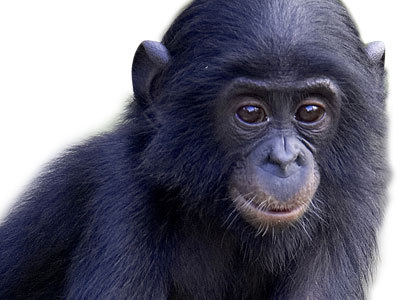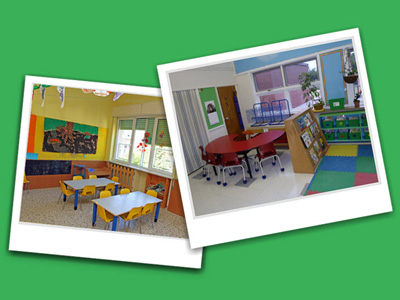 |
Bony Fishes Collection |
10.00 |
Whether they are cruising the vast open sea, blending in with the bottom, lurking in the kelp beds, hiding in the coral, or fighting their way upstream, fish live in a world that’s vastly different than ours. In the Bony Fishes Collection, we’ll dive into this world. You’ll explore:
• Bony Fishes Module 1: Physical Characteristics
• Bony Fishes Module 2: Distribution and Habitat
• Bony Fishes Module 3: Ecology and Behavior
• Bony Fishes Module 4: Reproduction and Development
• Bony Fishes Module 5: Conservation.
|
 |
Mammals |
4.50 |
This series of five modules provides you with a greater understanding of the wide range of the types of mammals and some of their remarkable adaptations, enabling you to be a better interpreter, animal care professional, volunteer, or simply a better informed individual. Information includes an overview of physical characteristics, habitat, behavior, reproduction, and the conservation efforts dedicated to protecting this taxonomic group. Individual modules allow for a more focused approach to the material, as each takes a narrow scope. Each module includes self-assessment opportunities and its own mastery test. |
 |
Introducing Animals: Reptiles |
4.50 |
In this course collection, interpreters, guides, docents, and wildlife care specialists can explore the fascinating life of reptiles in this collection of five modules. The individual modules allow for a more focused approach to the material, as each takes a narrow scope. Each module includes self-assessment opportunities and its own mastery test. Reptiles 1 explores the physical characteristics of the reptiles: snakes, lizards, turtles and tortoises, crocodilians, and tuataras. Reptiles 2 covers reptile distribution and habitats. In Reptiles 3, learners investigate what—and how—reptiles eat, as well as which animals prey on various reptiles, and how reptiles avoid being eaten. This module also covers thermoregulation, locomotion, behavior, and communication. Reptiles 4 explores the fascinating world of reptile reproduction. The final course in the series, Reptiles 5 investigates the conservation status of reptiles, threats to reptiles, and how conservationists are helping. The module concludes with a look at some examples of how we can all participate in reptile conservation. |
 |
Great Apes |
3.00 |
This collection of 3 courses explores the natural history and conservation of the great apes and covers a bit about primates and how the apes fit into this larger group of animals. |
 |
Introducing Monotremes |
3.00 |
Are monotremes a bit of mystery to you? Get to know the echidnas and the platypus, as Monotremes 1 explores the physical characteristics, distribution, and habitats of echidnas and platypuses. In Monotremes 2, learners investigate what—and how—monotremes eat, as well as which animals prey on them, and how they avoid being eaten. This module also covers thermoregulation, locomotion, behavior, and social structure. The third and final course in the series, Monotremes 3, explores the fascinating world of monotreme reproduction and investigates the conservation status of monotremes, threats to platypus and echidna species, and how conservationists are helping. The module concludes with a look at some examples of how we can all participate in conservation. Remarkable images show platypuses and echidnas in ways you’ve never seen before, and video provides insights into their behavior. Interactivity sprinkled throughout the modules engages participants in the learning process, and questions at the end of each section ensure that they have mastered fundamental concepts before they move on. |
 |
Ending Extinction: The Basics - Module 2 |
2.50 |
The goal of this course is to lead the fight against extinction by taking a leadership role and collaborating with others to save species from extinction using science-based techniques and fostering collaboration and cooperation. |
 |
Plant Conservation |
2.50 |
The goal of this course is to lead the fight against extinction by taking a leadership role and collaborating with others to save species from extinction using science-based techniques and fostering collaboration and cooperation. |
 |
Interpretation Basics: Module III Storytelling |
2.50 |
If you've successfully completed Interpretation Basics: Modules I and II, you can further develop your interpretive skills by completing the third module in the series: Interpretation Basics III: Storytelling. A well-told story is the most powerful way to connect visitors to your organization's mission and inspire conservation action. The skills presented in this course will help you select, develop, and deliver message-driven stories that are compelling, enjoyable, meaningful, and memorable. |
 |
Ending Extinction: The Basics - Module 1 |
2.50 |
The goal of this course is to lead the fight against extinction by taking a leadership role and collaborating with others to save species from extinction using science-based techniques and fostering collaboration and cooperation. |
 |
Emergency Animal Recall - Gorillas |
2.00 |
Welcome to Emergency Animal Recall. This collection consists of an overview course which covers the fundamentals of Emergency Recall training for exhibit animals, including:
What exactly is Emergency Animal Recall, and why is it necessary?
What are the benefits of Emergency Animal Recall?
How do you generate support within your organization for a training program, and how do you decide which animals should be trained first?
What equipment will you need, and what preparations will you need to make?
What is the general outline of an Emergency Recall training program, and how do you maintain the conditioning once it has been established?
After completing this Overview, you can continue with the species-specific Gorillas Emergency Animal Recall course.
|
 |
Course 08: Human Relations Skill Development |
2.00 |
Being able to communicate effectively is an essential human relations skill for school-age care professionals. To be a good communicator, school-age professionals need to understand the components of communication and how the communication process works. They need to identify barriers to clear communication and develop strategies for minimizing or eliminating barriers to communication. School-age care professionals also need to work cooperatively with other team members to solve problems and conflicts. This requires an understanding of how teams work and the characteristics of effective teams. Assessing the current status of personal human relations skills helps each professional identify priorities for making improvements to these skills. |
 |
Course 34: Creating Community Collaborations |
2.00 |
Across the country, more and more communities are forming community collaborations to address the out-of-school needs of children and youth of all ages. When different segments of the community join together, share ideas, and pool their resources and efforts to create OST initiatives, children and youth benefit. What one organization or program may not be able to accomplish alone, is often achievable when partnerships and collaborations among diverse groups and individuals are formed.
When OST professionals are knowledgeable about what it takes to create and sustain successful collaborations, they can play an important leadership role in creating OST initiatives and programs that will meet the needs of children and youth in their communities now and in the future.
|
 |
Course 26: Human Relations Skill Development: Focus on Leadership Styles and Conflict Management |
2.00 |
Research indicates that those in positions of leadership use a variety of different leadership and management styles. A person’s effectiveness as a leader is often directly linked to his or her leadership style. It is important for OST professionals to be aware of the assumptions and characteristics of different leadership styles. Knowledge of different leadership styles can help OST professionals reflect on their own leadership style and assess its effectiveness. It can also help OST professionals take a proactive approach to applying different leadership styles and techniques, depending on the situation.
Leaders also use a variety of different styles when it comes to managing and resolving conflicts. By understanding how to diagnose the causes and dynamics of conflict and understanding the characteristics of different conflict management styles, OST professionals can choose the best conflict management strategy for each situation.
There are a number of skills that enhance the ability of OST professionals to employ different leadership and conflict management styles effectively. When OST professionals are aware of these skills and their own skill levels, they can set priorities for ongoing development of leadership skills. |
 |
Course 25: Focus on Health and Stress Management |
2.00 |
Every day OST professionals dedicate themselves to caring for and nurturing children, youth, and families. Often OST professionals are so dedicated to serving others, they neglect their own needs. When this happens, OST staff can experience stress that causes them to become overwhelmed, exhausted, frustrated, dissatisfied with job responsibilities, and unappreciated. When OST professionals maintain a healthy balanced lifestyle, they are in a much better position to face the challenges of supporting and nurturing children and families with positive energy, enthusiasm, patience, and empathy. By developing self-awareness; linking their personal and professional goals; developing a healthy balanced lifestyle; and identifying and managing stressors effectively, OST staff can create and maintain a positive sense of well-being that allows them to maximize their ability to build positive relationships with children, parents, colleagues, and others. |
 |
Course 31: The Six "Ps" of Marketing School-Age Programs |
2.00 |
Effective marketing of OST programs is a systematic process that involves research, analysis, assessment of market trends and needs, short-term and long-term planning, and development of effective strategies to promote OST program services and develop a positive image of the program in the community. It is important for OST leaders to recognize that marketing is a far reaching process that includes, but is not limited to, advertising and publicity. When OST leaders take a comprehensive approach to marketing, their programs and projects have an excellent chance of success. Knowledge and understanding of the marketing process is an invaluable tool for OST leaders as they plan and implement new programs and projects, assess the stability and need for improvement of current programs, develop plans for new or expanded programs, and develop a positive public image of the program and its services. |
 |
Course 19: Involving School-Age Children in Activity Planning and Implementation |
2.00 |
As they grow and change and move toward independence, school-age children and youth become very interested in planning and directing their own activities. This means it’s very important for staff to think of ways to involve them in program planning and implementation. By planning activities WITH children instead of FOR them and engaging them in creating the program environment, staff can help children develop a feeling of ownership of the program – a positive feeling that the program belongs to them. |
 |
Course 10: School-Age Care as a Family Service – Part Two |
2.00 |
The foundation for getting parents involved in school-age programs is to keep parents well informed about what is happening in the program. Quality programs also provide parents with opportunities to make suggestions and give feedback on program services through suggestion boxes, feedback forms, and surveys. When parents are encouraged to have input in the program, they develop trust and confidence in the program and feel a sense of pride and ownership. They are much more likely to participate as resourceful partners with program staff when they know their ideas are welcome and valued. Finally, because parents are all different from each other, it’s important to provide many different opportunities for them to connect with the program. Staff in quality school-age programs recognize that all parents don’t have to be involved in the same way. |
 |
Course 15: Designing Effective Indoor School-Age Play and Learning Environments |
2.00 |
Planning effective environments is the first step to planning an effective program. When environments are attractive, interesting, and comfortable, they provide a backdrop for a varied program that can address the developmental needs of school-age children. The look and feel of well-planned environments send messages that let children know they are welcome and valued. They are inviting and encourage children to get involved and stay engaged with program activities and experiences |
 |
Growing as a Professional in School-Age Programs (Collection) |
2.00 |
Caring for school-age children in a school-age program is a relatively new field of work. The field itself is constantly changing and expanding. In view of this "newness" and change, those who work in the field are playing an important role in shaping and defining what it means to be a school-age professional. They are guiding school-age care as an emerging profession.
In the search for a definition of professionalism in school-age programs, it is helpful to examine the common characteristics of professionalism in other fields. The next step is identifying qualities and characteristics associated with professional behavior in the school-age field, itself. As a school-age professional, it is also important to understand the importance of acting as a public policy advocate on behalf of school-age children and their families.
An important part of professionalism is continued personal growth and development in relation to the field. This requires using appropriate resources and strategies to further individual professional development. It also requires considering what constitutes ethical conduct in the field and developing an ongoing commitment to ethical behavior. |
 |
Human Relations Skill Development (Collection) |
2.00 |
Being able to communicate effectively is an essential human relations skill for school-age care professionals. To be a good communicator, school-age professionals need to understand the components of communication and how the communication process works. They need to identify barriers to clear communication and develop strategies for minimizing or eliminating barriers to communication. School-age care professionals also need to work cooperatively with other team members to solve problems and conflicts. This requires an understanding of how teams work and the characteristics of effective teams. Assessing the current status of personal human relations skills helps each professional identify priorities for making improvements to these skills. |
 |
Youth Development Trends: Focus on Older Youth (Collection) |
2.00 |
The Center for Early Adolescence at the University of North Carolina and the Search Institute have found that early adolescence is a time of rapid change in youth development and developmental needs. For many children, the characteristic needs of early adolescence begin to emerge as early as age nine, when children are still in elementary school and attending traditional OST programs. OST professionals who understand these emerging needs are better equipped to create successful program experiences with older children in their programs.
The number of quality OST programs for children between five and twelve is steadily growing across the country. At the same time, there is increasing public interest in establishing programs that can also address and support the out-of-school needs of children over age twelve. For many years, communities tried to meet the needs of older youth by a problem-solving approach that focused on helping youth by fixing what was wrong. New trends in youth development take a more positive approach and are focused on working with youth to create positive outcomes.
OST professionals who are knowledgeable about adolescent development and developmental needs and are knowledgeable about youth development research and trends can play important roles in helping their communities design and develop the next level of program services for children over the age of twelve. By learning about ways to support the developmental needs of older youth, OST professionals can join with others to create strategies and programs for continuing to build on the positive experiences younger children have in their OST programs. |
 |
Course 09: School-Age Care as a Family Service - Part One |
2.00 |
Strong, positive, cooperative relationships with parents and families are at the heart of quality school-age programs. Unfortunately, positive relationships with parents and families are not always easy to achieve because parents, like children, have widely varying personalities; some are easier to reach than others. Parents in school-age programs have different ideas, values, concerns, knowledge, pressures, lifestyles, plans, dreams, resources, and constraints. Staff who are successful in building positive relationships begin by recognizing the importance of accepting parents as the most important people in children’s lives, regardless of differences among them. They understand that staff attitudes toward parents can have a strong effect on whether or not staff can establish positive relationships with parents. Staff in quality programs make a commitment to learning as much as possible about parents’ needs, interests, wants, and concerns and develop effective strategies for making positive connections with parents. |
 |
Course 16: Developing and Implementing Effective Indoor Interest Areas |
2.00 |
In order to operate an effective school-age program environment, it is essential for staff to know how to design, set up, and operate a variety of different interest areas that meet the developmental needs of school-age children. Effective interest areas are multi-dimensional; they provide a wide variety of activity options within the area. Effective interest areas provide children with opportunities to work and play independently on their own or with others. They also provide a setting for focused, staff-led activities designed to introduce children to new concepts and skills. Staff in quality school-age programs know how to work with colleagues and children to define, develop, and manage a wide variety of interest areas |
 |
Sharing Information with Parents and Other Professionals (Collection) |
2.00 |
School-age children work on many important developmental tasks during their out-of-school hours. One of the important responsibilities of OST staff is to help parents stay in touch with how their children are growing and developing during program hours. In addition to parents, professionals who work with children in other settings are often interested in learning how children spend their time when they are not at home or school.
Portfolios are excellent tools for bringing children’s experiences in OST programs to life for parents during planned parent conferences. They are also valuable tools for sharing helpful information about children with other professionals. |
 |
Course 23: Providing Homework Support |
2.00 |
The National Standard Objectives of Learning (SOL) have raised questions about the role of school-age programs in providing homework help and support. Research indicates there are many different ways to provide effective homework support in school-age programs. Some are more structured than others. When planning a homework support program, it is important for school-age programs to develop a homework philosophy that is consistent with the program’s overall philosophy and reflects current research on best practices for providing homework help. The homework philosophy should also reflect the needs of parents and children in the program and strike a balance between homework needs and other experiences that help children grow and learn out-of-school. When staff know how to design homework environments, identify appropriate homework materials, and use effective strategies to guide children’s efforts, homework support can be an effective component of ongoing programs. |

























